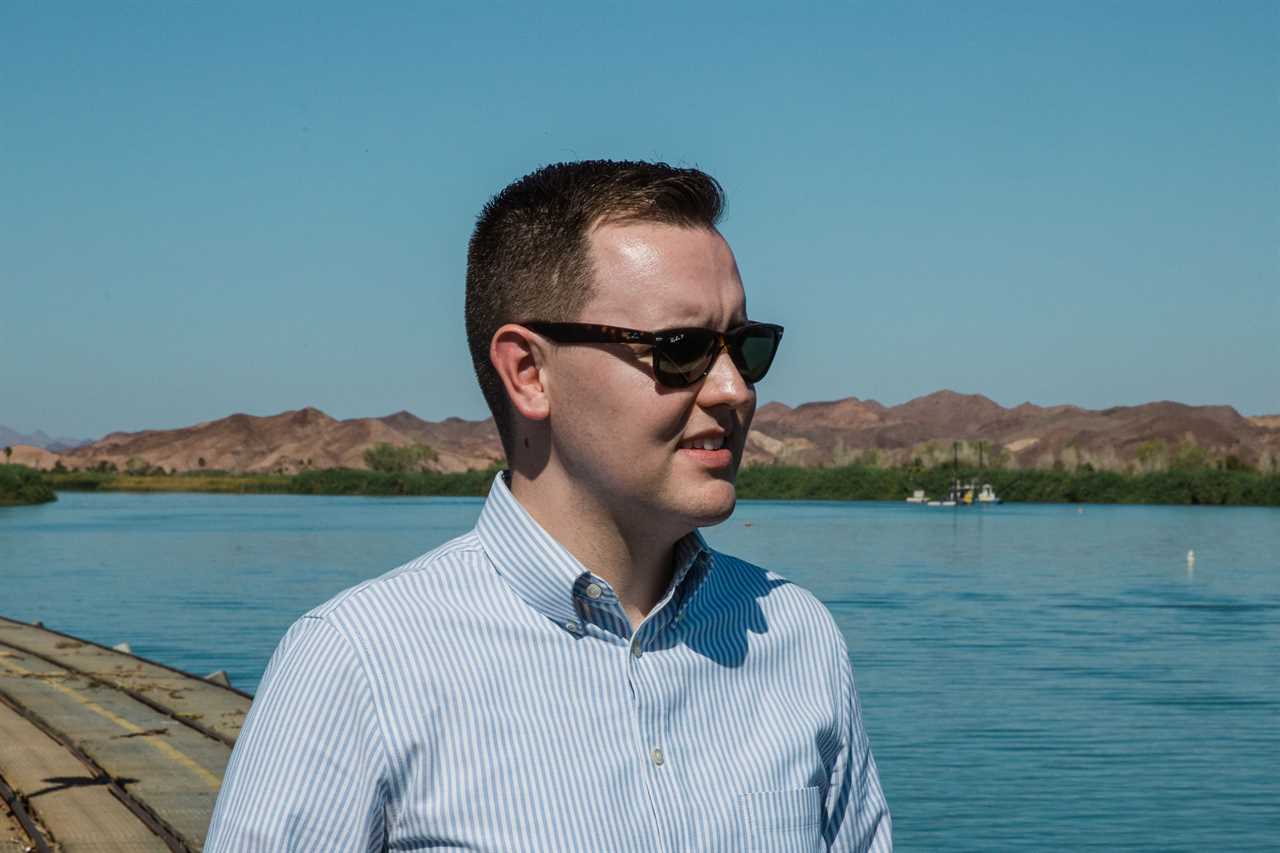
EL CENTRO, California — When the highest stakes water negotiations in a century opened this fall, the largest, most powerful state — California — was represented by the youngest person at the table, a 27-year-old named John Brooks Hamby, who graduated from college barely four years ago.
In the short time since then, Hamby — who goes by J.B. — has risen from recent Stanford grad to candidate for his hometown irrigation district to chair of the Colorado River Board of California, a position that makes him the state’s lead negotiator for its rights to the West’s most important river.
With climate change dramatically shrinking the waterway’s flows, the seven states that share the river must now decide how to allocate deep, painful cuts in water use that will determine the future of communities across a huge swath of the country. Whether Hamby can navigate the reflexive defensiveness of this region’s hardened farmers matters not just to his own political future. It could determine the fate of a broad swath of the American West.
To the waterway’s power players and intelligentsia, whose annual meeting convenes Wednesday in Las Vegas, Hamby has come to represent the hope for a new way to resolve the generations-deep conflicts over the Colorado River.
It’s a heavy mantle for a 27-year-old whose prior work experience consists of a series of internships — two for Uber, one in Washington for a U.S senator, and one for Imperial’s legal department.
It's too simple to say that it’s a showdown between agriculture and cities, but that’s a central dynamic, and Hamby now finds himself on both sides of that divide. But the negotiation has a second dynamic as well; it also pits California, the largest states along the river that share the river, against the others, which have burgeoning cities and agricultural interests of their own that need water.
Whether the states can find a way through those competing interests will depend a lot on Hamby, who was elected in 2020 to the board of the Imperial Irrigation District — the mercurial entity that controls the enormous supply of water that turns this slice of the Sonoran Desert into some of the country’s most productive agricultural land — on promises to protect its rights. Under the 101-year-old compact that governs the river, they are among the most senior and legally protected.

Hamby once spit fire at sprawling urban and suburban communities upstream for dreams built on appropriating his community’s water. But as he’s been promoted, his tone has softened. Today he acknowledges that even the water users with the strongest rights will have to give something up. This spring, he led the irrigation district in making a major water conservation commitment over the next few years as a show of good faith — albeit one that is coming with millions of dollars in federal compensation.
“For the more senior water right holders, there should be a view that you can’t expect to do nothing. But you also shouldn’t expect you’re going to get nothing out of it,” he explained to me recently as we drove around his district, where modest 1950s ranch houses have beaten back the desert. “It can’t be just the junior users losing everything, and losing water supply, and you can’t have others not giving anything at all. There has to be a recognition that there’s going to be give and take.”
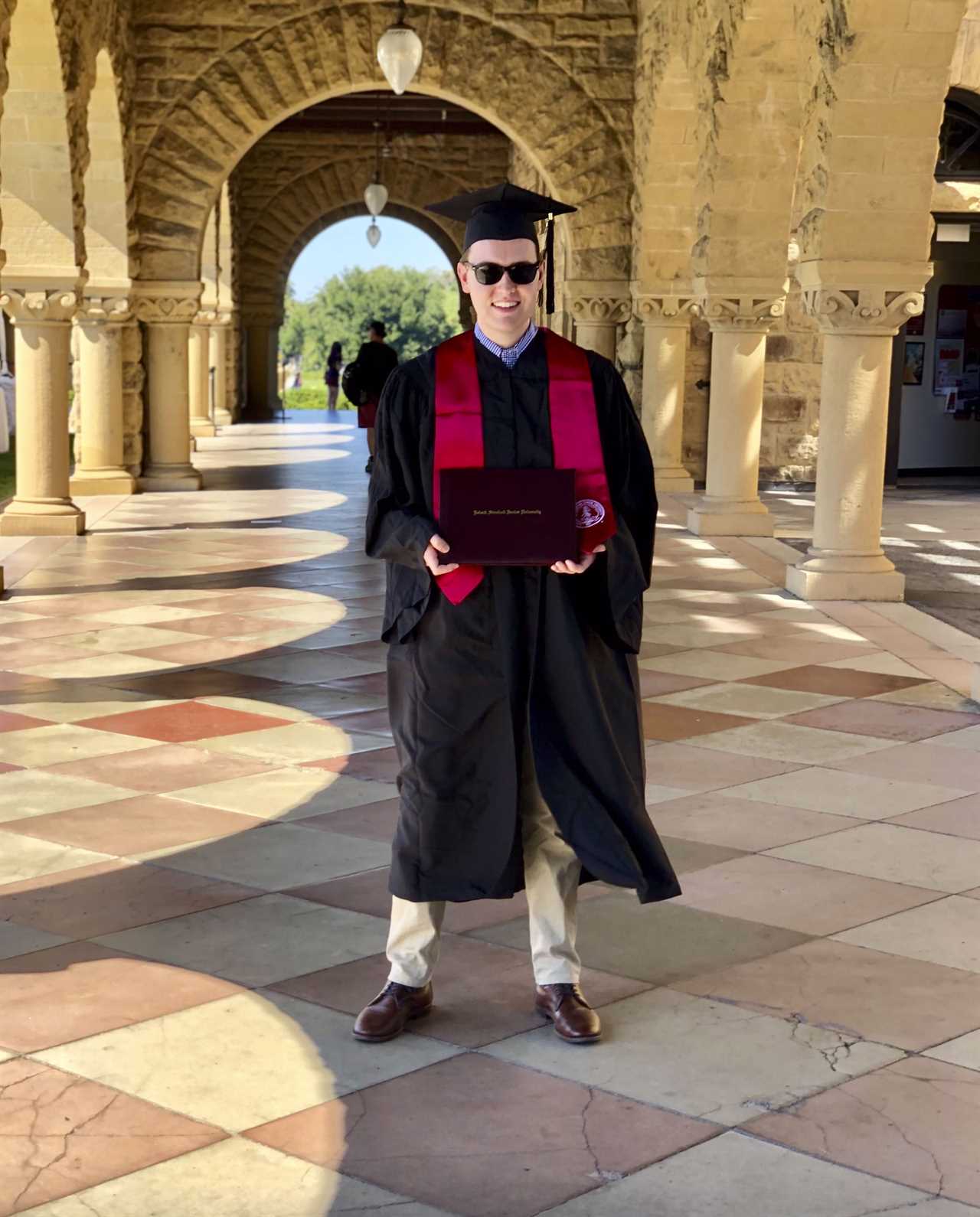
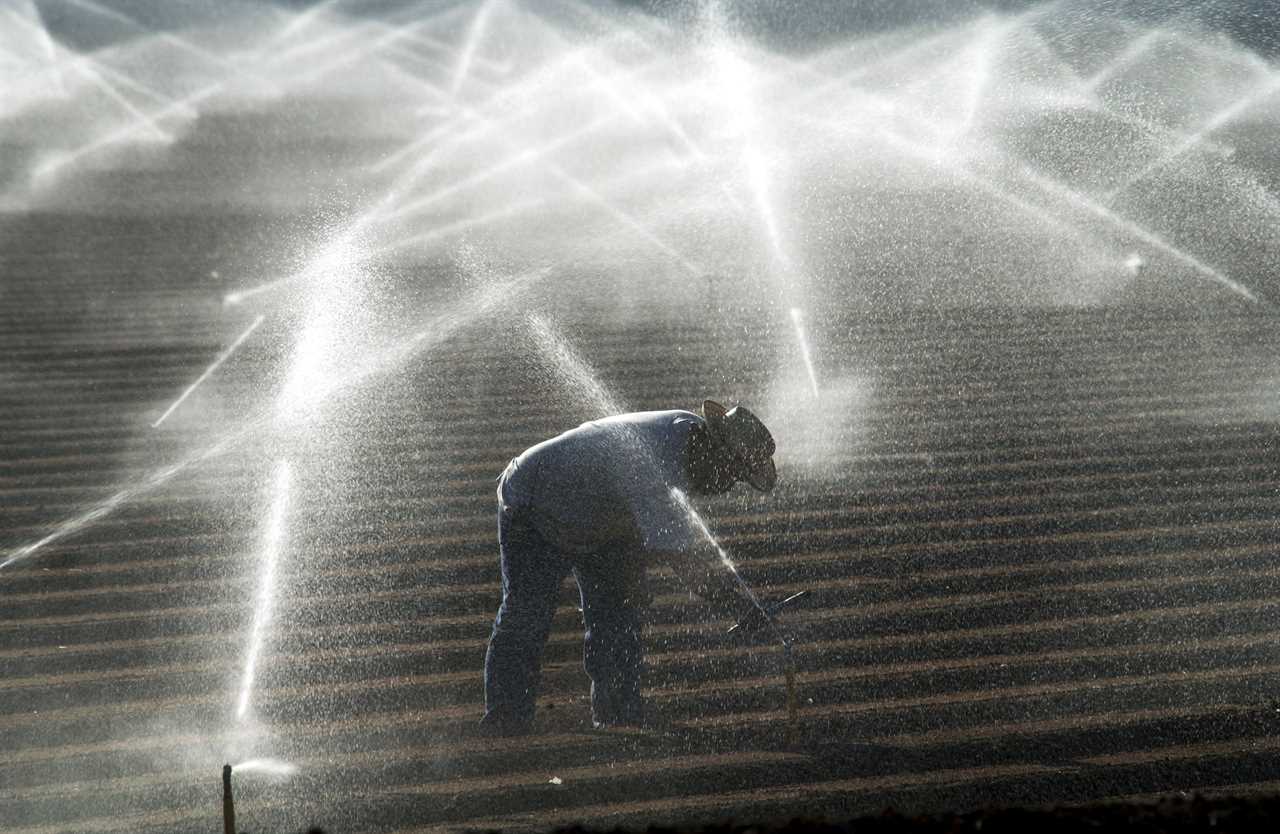
At first, Hamby had no interest in returning home to the Imperial Valley after graduating from college. Life along this weathered stretch of the U.S.-Mexico border might not seem to offer much of a draw for an ambitious college graduate: The mercury regularly hits 120 in the summertime and wind whips toxic dust up from the desert’s playa, driving childhood asthma rates to the highest in the state. The county’s unemployment rate is also the highest in California, and more than one in five households falls below the poverty line.
“I wanted to be anywhere but here,” he told me, his foot heavy on the accelerator of his silver Toyota Prius as he drove through El Centro, the county seat, where strip malls dominate the landscape and high school football games end with fireworks.
But at Stanford, Hamby studied the contentious history of the river and he realized that his hometown — or more specifically, the Imperial Irrigation District — holds one thing that makes it the envy of the entire West: the largest and most powerful share of the Colorado River.
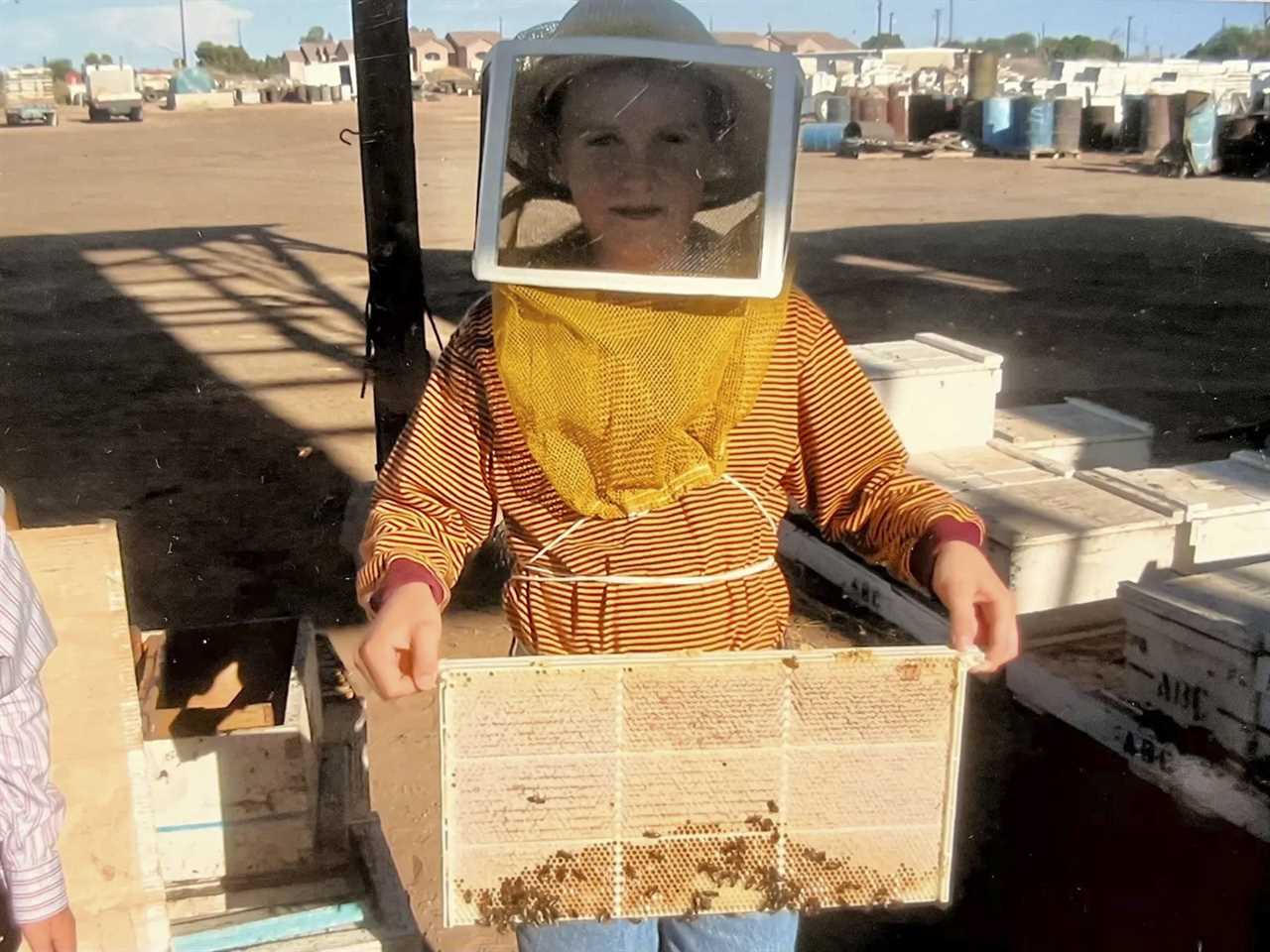
Hamby came from one of Imperial’s generations-deep families. His great-grandfather arrived in the arid valley during the Great Depression, finding work as a ditch digger before starting a beekeeping business. His father has run a series of agricultural operations here.
Imperial County has fewer than 180,000 residents, but the Imperial Irrigation District is a colossus in the world of Western water, controlling a trillion gallons from the river that serves as the lifeblood for 40 million people from Wyoming to Mexico. That’s more water than Los Angeles has, more than San Diego, more than Phoenix and Las Vegas and Denver. More, in fact, than the entire states of Arizona and Nevada — combined.
So soon after graduation, on the strength of his B.A., internships and his family’s deep roots in the county, Hamby launched a campaign for a seat on the five-member irrigation district board. He promised voters he would fiercely defend the valley’s water, tapping into a deep-seated fear that wealthy coastal cities are greedily eyeing their supply. Although just 24 at the time, Hamby won in a landslide.
Then last January, at one of the darkest, most bitter moments in the river’s modern history, California’s water barons voted in Hamby as the state’s lead negotiator for the Colorado River.
After a series of extra-dry years, water managers were staring down the possibility of reservoir levels falling so low that water could no longer be physically delivered out of one of the dams to the states of Arizona, California and Nevada, and the states were deadlocked on who should take the deep cuts needed to head off disaster.
His first public act in the new job was to set California against the six other states, refusing to budge on its powerful legal rights to avoid mandatory cuts.
“That was clearly the right thing to do at the time because there was no choice,” Hamby said. But the backlash from the other states and the press was harrowing. He vowed that going forward, more cooperation was needed.
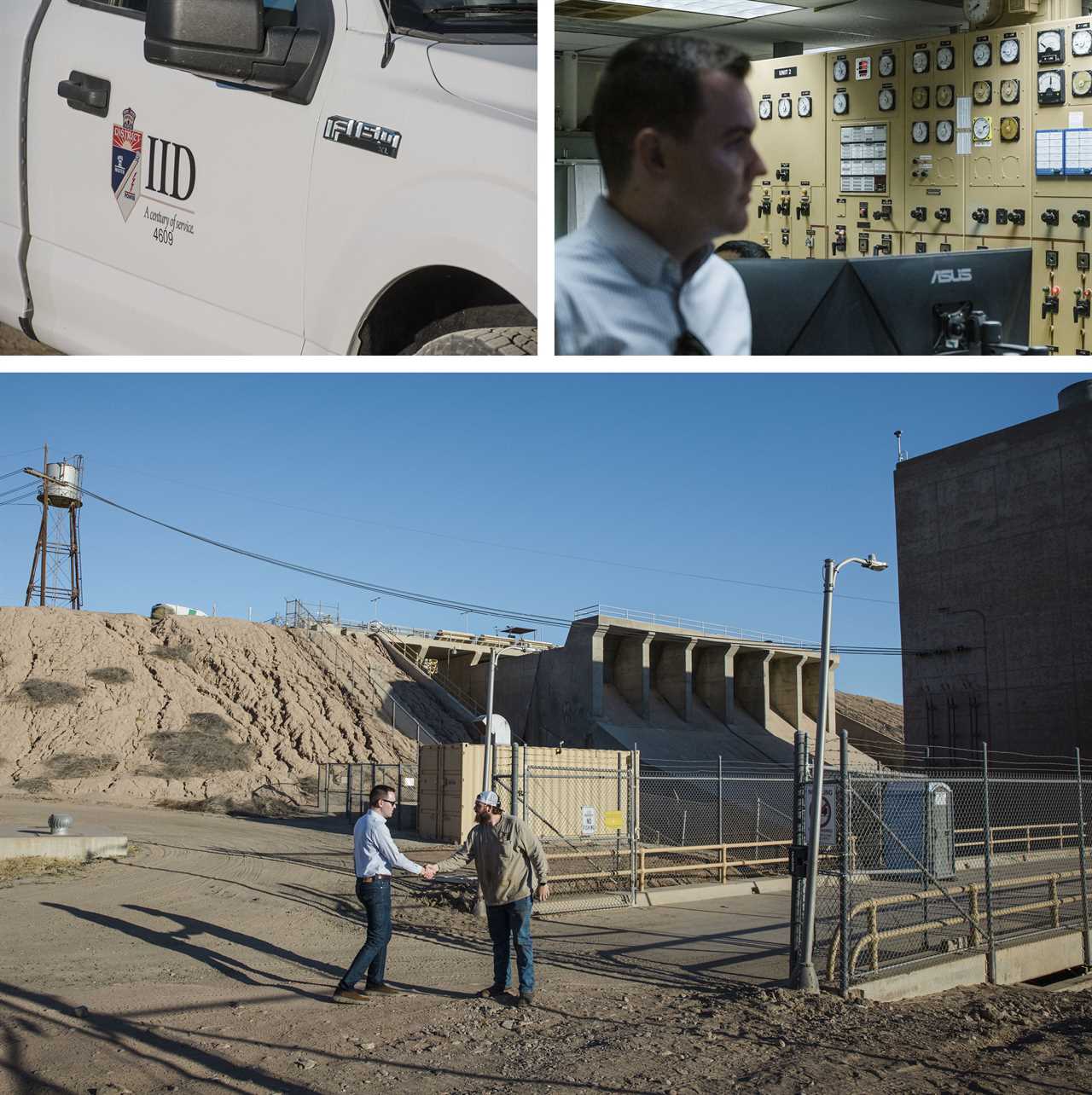
“It was a crucible moment,” he said. “I resolved to myself, never again will this happen.”
In the 10 months since then, he has architected a turn-around, negotiating a deal among California, Arizona and Nevada to conserve water over the next three years to buy time for much bigger, long-term rules to be negotiated. The short-term deal expires in 2026; the talks that launched this fall are focused on what comes after that.
This next round will be infinitely harder. This year’s band-aid agreement was only possible thanks to a gush of federal funding from Democrats’ signature climate law and last spring’s unexpectedly robust runoff — neither of which can be counted on going forward.
And Hamby’s constituents in Imperial Valley, whose participation was essential to sealing that deal, are already warning that the compromises they were willing to make in a moment of crisis won’t necessarily be on the table next time either.

In many ways, the Colorado River negotiations are the country’s most wrenching climate reckoning yet.
It is a negotiation that can produce no winners, only pain. Pain for the region’s $5 billion agricultural industry and the rural communities home to it, where swaths of fertile land worked by family farmers for generations will almost certainly have to come out of production. Pain for the 40 million people who get the river’s water at their taps and will inevitably have to pay more to keep it flowing or find alternative supplies. And pain — perilous pain — for elected officials from Wyoming to the border with Mexico to Washington, D.C., who will have to make Sophie’s choice after Sophie’s choice during the heat of a presidential election season if a deal is to be pulled off.
But the alternative is worse. If negotiators fail to agree on a plan to share the burden, the fate of the river — and economies from Denver to Phoenix to San Diego to Los Angeles — could be plummeted into chaos. A fight that descends into litigation could leave water managers’ hands tied in a moment of crisis, unable to deliver vital supplies of water or produce hydropower that is crucial to the stability of the Western power grid. Even before a ruling, the uncertainty could drive cities and suburbs to rash and expensive moves that would decimate rural communities.
Hamby’s top priority upon winning the state-wide role was to rebuild relationships with the other state leaders. The mechanics of water negotiations are insanely complicated, involving arcane accounting rules, high-powered computer models and trigger points for water cutbacks that can be gamed and influenced. But what determines their success or failure more than anything is simple: trust. Negotiators must have enough confidence in each other to be able to share their internal challenges and vulnerabilities if they are to have any hope of crafting a deal that is politically tenable.
No relationship is more important to the river’s future than the one between the lead negotiators for California and Arizona.

The two states’ interests are in many ways diametrically opposed: Arizona’s sprawling Sunbelt communities are at greatest risk of being cut off from the river under the more than century-old legal regime for doling out cuts in times of shortage. The Imperial Irrigation District and other powerful desert farm districts hold rights that put them last in line for cuts, giving California as a state a huge amount of water that it can move around internally to meet its varied needs.
Tom Buschatzke, Arizona’s lead negotiator for the Colorado River, didn’t know Hamby before the beginning of this year. But he has been around long enough to see the Imperial Irrigation District’s capricious board blow up multiple rounds of negotiations at the 11th hour, and told me that he hoped that having its representative play such a central role in the river negotiations would avoid that happening again.
On the way out of a disastrous meeting in Denver in January, when the states were firmly deadlocked over how to make the near-term cuts, Buschatzke invited Hamby to meet one-on-one. Over lunch at a swanky Mediterranean restaurant in Yuma, Arizona, the pair began building a foundation of trust.
“J.B. has the same job we all have: How do we collectively work to stabilize and protect the Colorado River system, while at the same time making sure that our constituents are buying into the deal?” said Buschatzke who, at 68, has three daughters older than Hamby.
In less than a year, Hamby’s less combative tone, paired with his thoughtful, well-researched approach to negotiations, has won him the confidence, respect, and in some cases, gushing affection of many of his counterparts up and down the river.
The question is whether his California colleagues feel the same way.

With the country’s largest congressional delegation, a powerhouse agricultural industry, an economy on pace to overtake Germany’s, and cities home to some of America’s deep-pocketed political donors, California is the force to be reckoned with in Colorado River negotiations.
That is, when the state knows what it wants.
While the Imperial Irrigation District and a handful of other century-old farm communities in southern California hold the largest and most legally powerful rights to the river’s water, it is the state’s coastal metropolises that give it much of its might. And they have the most vulnerable water rights.
Hamby’s job, now, is to get them to hold together around a single position in negotiations with the six other states.
His role as the state’s lead representative in interstate negotiations also makes him chair of the Colorado River Board of California, an entity composed of the major river users within the state. The post comes with big responsibilities, but very little authority to actually pull them off. Instead, the real power in California lies with the biggest water districts, which each hold their own contracts with the federal government for deliveries.
“He’s in the position of herding cats right now,” said Bart Fisher, a grower in California’s Palo Verde region who helmed the state’s Colorado River board during the last major negotiations among the states in the early 2000s and nominated Hamby for the leadership job in January.
Hamby wasn’t most of those cats’ first choice for the job.
The Colorado River Board chair has traditionally been held by a representative for one of the state’s three big farm districts — a move seen as fit since more than three-quarters of the state’s water rights are held by agriculture. The previous chair, who came from the Coachella Valley’s agricultural industry, was too busy with his day job and was stepping down. Fisher was also full-up with business and family responsibilities.
That left Hamby.
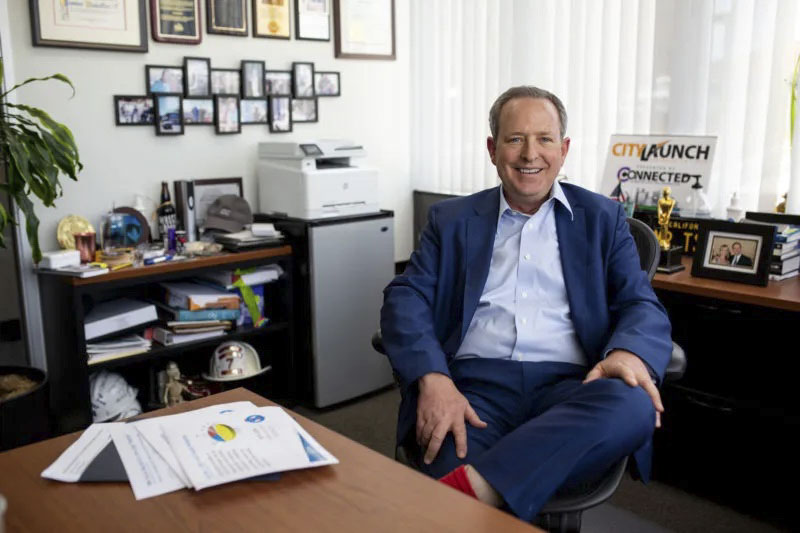
But this time the urban half of the board didn’t easily line up behind the farmers’ pick. A representative from the city of San Diego made a last-minute run. The series of votes that culminated in Hamby’s victory were filled with back-stabbing and palace intrigue that the urbanites are still smarting over 11 months later. It didn’t help that Hamby turned around after the vote and hired San Diego’s archnemesis, a brilliant but risk-taking veteran of California’s water wars, as a consultant for Imperial in the talks.
For now, the San Diego faction is holding its fire. But all sides have made clear: They’re watching Hamby’s every move.

At Stanford, Hamby showed up to class in button-down shirts tucked into jeans, cinched with a western belt buckle, just as he dresses today. He focused on early American history. His particular fascination, his academic adviser, Jonathan Gienapp, told me, was the tension between local interests and the broader, common good that revolutionary leaders grappled with in crafting the young democracy.
“J.B. was really taken with this struggle. … The sense that being a representative is not simply caving to the demands of your constituents, but trying to recognize what is actually better for them in the long-run, even if their immediate passions can’t see it,” Gienapp said.
Now, Hamby’s fate hinges on whether residents back home trust him to strike that balance.
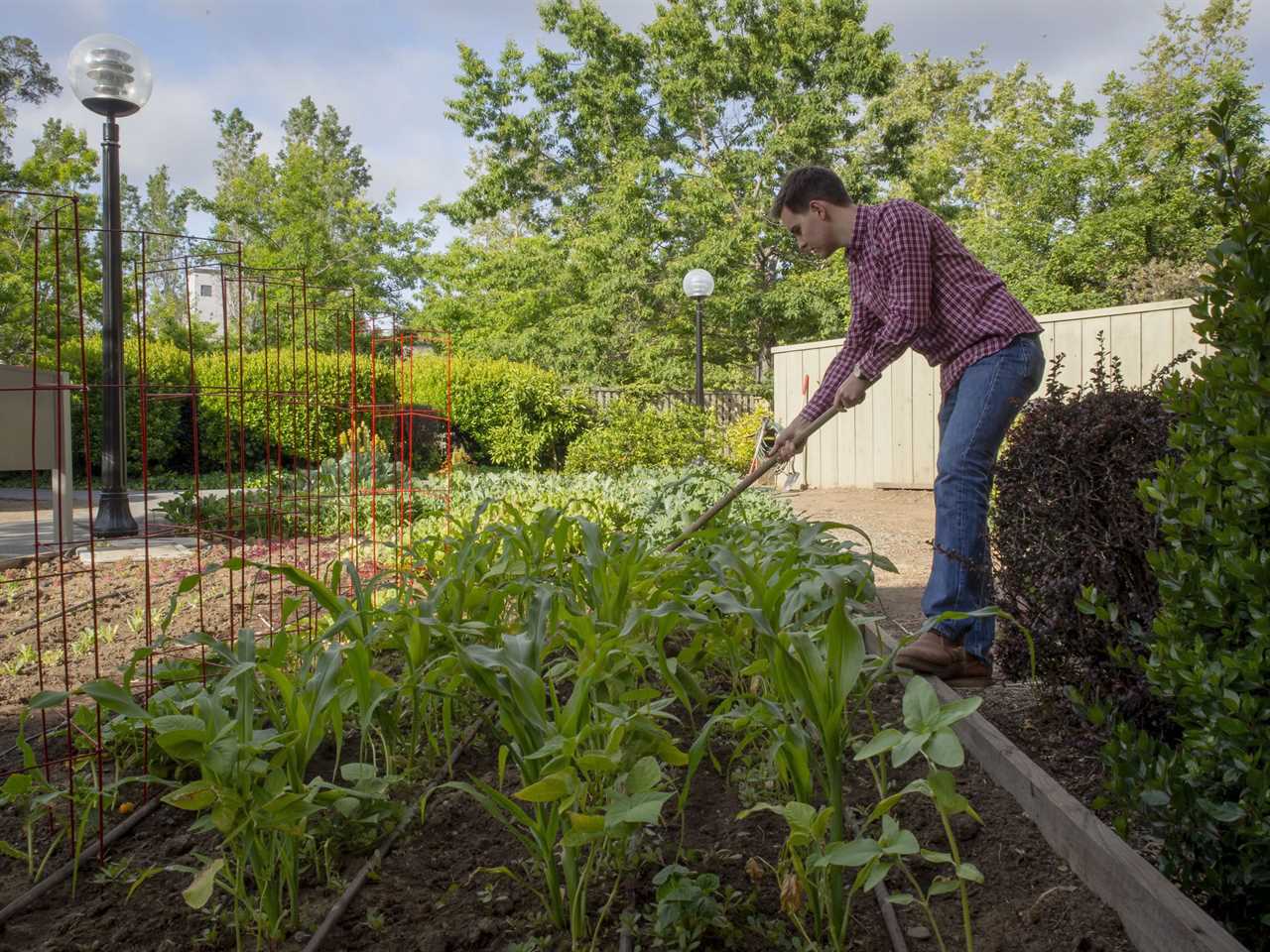
Unlike many other agricultural water districts where boards are elected by landowners whose votes are weighted by acreage, Imperial’s board is chosen by the general electorate. But wealthy farmers and landowners carry outsized influence, making campaign contributions and offering up their real estate for campaign signs — a key feature in local elections here.
And as in the Colorado River Board election, Hamby wasn’t necessarily their preferred choice to represent them.
“We all saw this moment coming, and I was asking, ‘Who is going to be our point person?’ And then there’s all this turnover on the board and it’s frustrating. Our livelihoods are in their hands,” said Jack Vessey, whose sprawling Imperial Valley family vegetable growing business celebrated its 100-year anniversary this year.
Asked if Hamby was the point person he wanted, he took a long pause.
“Frankly, I mean, he’s what we got,” he said. “He’s a very smart, intelligent, young man. Young.”
The electorate here is notoriously fickle. Twenty years ago, when a slim majority of the irrigation district’s board signed off on a deal to share a slice of its supplies with coastal cities, voters sent them packing.
It’s not yet clear what it will take to actually follow through on the major conservation commitment the district made earlier this year as part of the short-term deal with Arizona and Nevada. The water Imperial offered up accounts for more than a quarter of the overall amount the three states said they would save, and fully half of California’s commitment. It was also symbolically crucial to clinching the deal.
But those water savings will have to come through the voluntary participation of farmers and landowners in programs to upgrade irrigation efficiency or forego watering for a stretch of the summer. The details of those programs, including the amount of money that participants will get paid, are still being ironed out. And key documents, including the contract for federal funding and environmental reviews, aren’t yet done. If they’re not finalized by this spring, when farmers make their planting decisions, the district could have to consider fallowing — dubbed “the f-word” in these parts. Fallowing, or leaving fields unplanted, doesn’t just affect the farmer’s income. It can gut rural economies, leaving workers unemployed and local businesses from seed stores to fertilizer operations to restaurants with massive holes in their revenue.

Several influential farmers arrived at a board meeting earlier this month with a warning for their elected officials.
“Instead of fallowing being a backstop, we generate it with on-farm [efficiency programs] or it doesn’t leave the valley,” said Andrew Leimgruber, a fourth-generation farmer in the Valley. “Because It doesn’t seem right to me that [our] communities should have to be impacted in order to support the coast or Scottsdale or Las Vegas.”
Hamby said he’s had to beat back internal questions about whether the district really needs to follow through on its full commitment, since the short-term deal was negotiated before last spring’s runoff raised reservoir levels.
But he knows that no single rainy season is going to solve the river’s existential threat. The state’s population is still growing, and the climate is still warming. And the only way his community will survive is if he makes a deal.
“Yes, we do” have to follow through, he said, banging his hand on the steering wheel to punctuate his point. “Because that’s what we said we were going to do. And our reputation matters.”
Hamby is up for re-election for another four-year term in 2024. The filing deadline to challenge him closed Friday. He’s unopposed.
----------------------------------------
By: Annie Snider
Title: The Fate of the West’s Water Rests on the Shoulders of This 27-Year-Old
Sourced From: www.politico.com/news/magazine/2023/12/12/jb-hanby-colorado-river-water-negotiations-00130881
Published Date: Tue, 12 Dec 2023 05:00:00 EST






